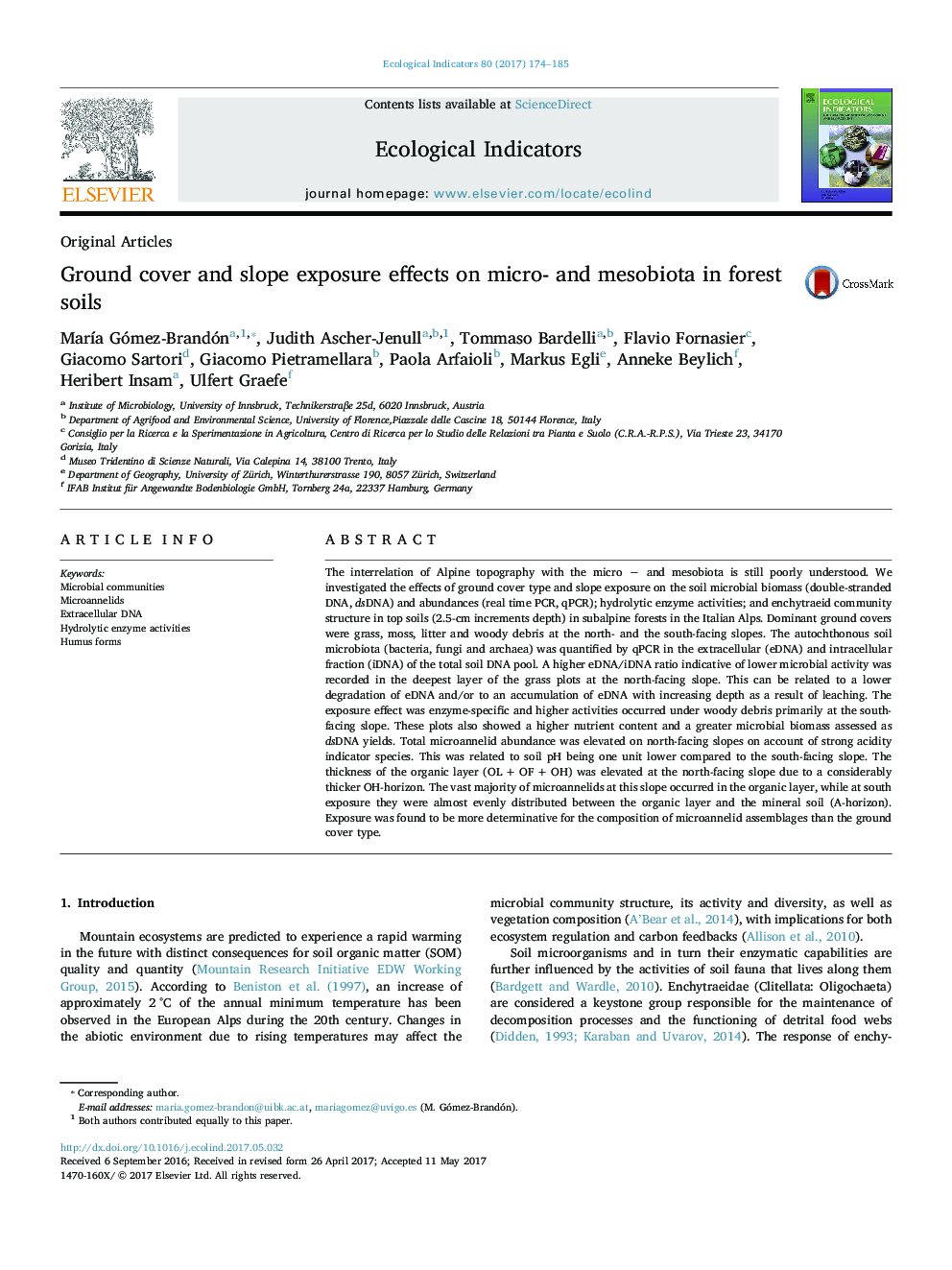| کد مقاله | کد نشریه | سال انتشار | مقاله انگلیسی | نسخه تمام متن |
|---|---|---|---|---|
| 5741379 | 1617122 | 2017 | 12 صفحه PDF | دانلود رایگان |
عنوان انگلیسی مقاله ISI
Ground cover and slope exposure effects on micro- and mesobiota in forest soils
ترجمه فارسی عنوان
پوشش زمین و اثرات مواجهه شیب در میکروسکوپ و مازوبیوتا در خاکهای جنگلی
دانلود مقاله + سفارش ترجمه
دانلود مقاله ISI انگلیسی
رایگان برای ایرانیان
کلمات کلیدی
موضوعات مرتبط
علوم زیستی و بیوفناوری
علوم کشاورزی و بیولوژیک
بوم شناسی، تکامل، رفتار و سامانه شناسی
چکیده انگلیسی
The interrelation of Alpine topography with the micro â and mesobiota is still poorly understood. We investigated the effects of ground cover type and slope exposure on the soil microbial biomass (double-stranded DNA, dsDNA) and abundances (real time PCR, qPCR); hydrolytic enzyme activities; and enchytraeid community structure in top soils (2.5-cm increments depth) in subalpine forests in the Italian Alps. Dominant ground covers were grass, moss, litter and woody debris at the north- and the south-facing slopes. The autochthonous soil microbiota (bacteria, fungi and archaea) was quantified by qPCR in the extracellular (eDNA) and intracellular fraction (iDNA) of the total soil DNA pool. A higher eDNA/iDNA ratio indicative of lower microbial activity was recorded in the deepest layer of the grass plots at the north-facing slope. This can be related to a lower degradation of eDNA and/or to an accumulation of eDNA with increasing depth as a result of leaching. The exposure effect was enzyme-specific and higher activities occurred under woody debris primarily at the south-facing slope. These plots also showed a higher nutrient content and a greater microbial biomass assessed as dsDNA yields. Total microannelid abundance was elevated on north-facing slopes on account of strong acidity indicator species. This was related to soil pH being one unit lower compared to the south-facing slope. The thickness of the organic layer (OLÂ +Â OFÂ +Â OH) was elevated at the north-facing slope due to a considerably thicker OH-horizon. The vast majority of microannelids at this slope occurred in the organic layer, while at south exposure they were almost evenly distributed between the organic layer and the mineral soil (A-horizon). Exposure was found to be more determinative for the composition of microannelid assemblages than the ground cover type.
ناشر
Database: Elsevier - ScienceDirect (ساینس دایرکت)
Journal: Ecological Indicators - Volume 80, September 2017, Pages 174-185
Journal: Ecological Indicators - Volume 80, September 2017, Pages 174-185
نویسندگان
MarÃa Gómez-Brandón, Judith Ascher-Jenull, Tommaso Bardelli, Flavio Fornasier, Giacomo Sartori, Giacomo Pietramellara, Paola Arfaioli, Markus Egli, Anneke Beylich, Heribert Insam, Ulfert Graefe,
